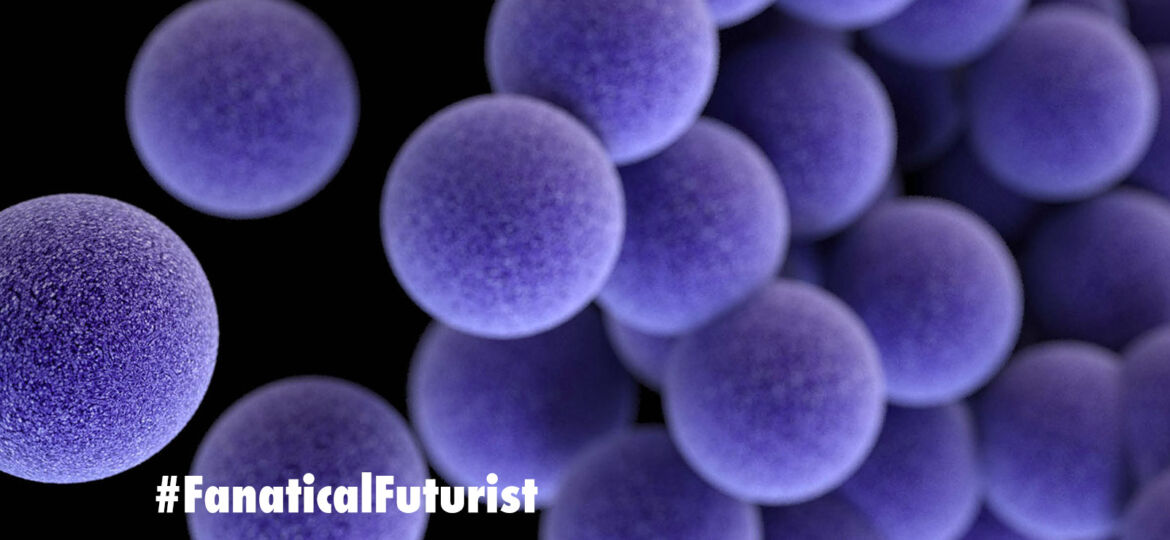
WHY THIS MATTERS IN BRIEF
As the number of superbugs and anti-biotic resistant bugs increase, we need to find new novel ways of fighting them.
A research team composed of scientists from the A*Star Institute of Bioengineering and Nanotechnology, and IBM, have produced a new macromolecule that can target and kill a range of deadly anti-biotic resistant “superbugs,” and along side genetic chainsaws and brain inspired treatments, it’s another tool in our arsenal in the war against superbugs. Furthermore, the macromolecule, which is a synthetic polymer, is non-toxic and could one day could be used as the foundation to create a completely new class of therapeutic treatments that could help society address the growing problem of antibiotic resistant superbugs all around the world.
The synthetic macromolecules are called Guanidinium Functionalised Polycarbonates (GFP) and they were found to be both biodegradable and non-toxic to human cells. Essentially, the positively charged synthetic polymer enters a living body and binds specifically to certain bacterial cells by homing in on a microbial membrane’s negative charge. Once attached to the bacteria the polymer crosses the cell membrane and triggers the solidification of proteins and DNA in the cell killing the bacteria.
“We have for the first time demonstrated the first example of a biodegradable synthetic macromolecule with broad-spectrum antimicrobial activity in mice, a unique killing mechanism and no toxicity,” says Yi Yan Yang, one of the lead authors on the study.
“Once the polymer finishes its job of killing the bacteria, it will be naturally degraded after three days and will not remain in the body. This antimicrobial agent shows great promise for the treatment and prevention of multi-drug resistant systemic infections,” he added.
In mouse experiments the molecules were successful in killing five commonly known superbugs found in hospitals all around the world and after multiple treatments the bacteria displayed no signs of developing a resistance to the new polymers.
Researchers at IBM have been working for several years to develop synthetic polymers that have a variety of medical uses. Back in 2016, a research team stumbled across what they then called “Ninja polymers.” The revelation that these synthetic molecules could target and kill bacteria then led to an exciting series of discoveries the team calls “Macromolecular therapeutics.”
“In 2016, we demonstrated the efficacy of synthetic polymers to combat deadly viral diseases,” explains James Hedrick, from IBM Research, “the current research for treating bacterial infections rounds out our ability to someday treat a spectrum of infectious diseases with a single, new type of mechanism without the onset of resistance.”
The next phase of the research is to work to develop the technology into a specific antimicrobial treatment that can be clinically tested in humans and hopefully become a new way to treat infections in the body, and the team hope to start human trials this year.
The study was published in the journal Nature Communications.
















